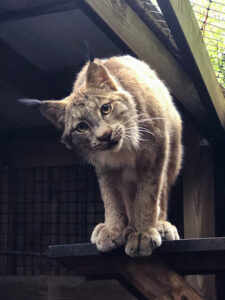Although the unseasonably warm winter weather has been enjoyable for many of us here in upstate New York, it also has the potential to detrimentally effect our native wildlife. Both animals and plants are well acclimated to our local environments and changing seasons, having developed physical traits and behaviors that help them to adapt. In our education programs on winter adaptations, we often discuss three major winter survival strategies: migration, hibernation/brumation, and adaptation. Many of our local birds, and some insects too, migrate or travel to warmer climates in the Fall and return in the Spring to avoid the winter weather. Some mammals and the majority of our native reptiles and amphibians go into a dormant state over the winter. Those animals that do not use one of these survival strategies have to find creative ways to survive the winter weather and have some really amazing ways of doing so. However, as the temperatures have increased and the snow from our last storm has melted, some of these adaptations have become a hinderance and can sometimes even affect their chances of survival.
For animals that migrate, warmer temperatures can affect the time frame in which they travel. At the same time, warmer temperatures can affect the soil and ultimately how and when plants grow, which can lead to less food available and increased competition for resources. And then when there is a sudden cold snap following a “false spring,” this can lead to animals dying from freezing temperatures that are not used to colder weather.
For animals that brumate or hibernate, these warmer temperatures can affect how long they are in a dormant state, and potentially lead to animals “waking up” too early. If they remain active for too long, they can expend too much energy, use up their fat reserves, and/or not find enough food to replenish before it gets cold again.

For those animals that adapt to survive, the adaptations they have are no longer aiding to their survival and success in nature. For example, snowshoe hares and arctic foxes both have a change in their fur color to better blend into the winter snow. However, if there is no snow, their white fur color will cause them to stick out rather then blend in, making it easier for predators to spot them and/or harder for them to hide from prey. Predators too are facing challenges; Lynx whose paws function like snowshoes so that they can walk on top of the snow to be more successful hunters no longer are able to use this advantage.
So, what is the cause of this unseasonable weather and shifts to our climate? Global climate change. And the worry is that temperatures and weather patterns are changing faster then nature can keep up. Although it is true that natural processes can affect our climate, the main reason why this is happening so quickly is due to human activities that have lead to the increased release of greenhouse gases. Today across the globe, researchers are studying the changes in our climate and coming up with solutions to help mitigate climate change.
However, there are some very simple ways that we can help too! We can utilize less energy by turning down our thermostat (which will also help to reduce your monthly energy bill), investing in energy efficient appliances and lightbulbs, turning off lights when not in use, using a reusable water bottle, and carpooling are all small changes we can make that can make a difference!
